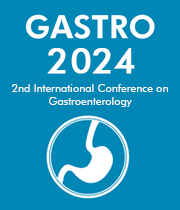Title : Non-surgical case of acute abdomen in an adolescent male: A case report on epiploic appendagitis
Abstract:
Epiploic appendagitis (EA) is an inflammation of the epiploic appendage and is a rare cause of abdominal pain that often manifests with an acute onset of abdominal pain. Prevalence of this disease among the pediatric age group is unknown and is mentioned only in few case reports and series in the west. It can either be primary, wherein it occurs as an acute ischemic inflammation, resulting from torsion of an appendage or spontaneous thrombosis of a central draining vein. Or Secondary EA, when it is inflamed due to another process. We describe a rare case of Epiploic appendagitis in an eleven-year-old overweight adolescent male admitted as a case of acute abdomen, who presented with severe left lower quadrant pain. Computed tomography (CT) scan with contrast showed pathognomonic signs of the disease (fat density ovoid structure adjacent to proximal sigmoid colon showing peripheral fat strandings, and a hyperattenuating ring-like structure) and was managed with antibiotics and analgesics. Patient improved, sent home and remained asymptomatic since then. With a thorough history and physical examination, clinicians, radiologists and surgeons should be aware of the typical imaging findings of epiploic appendagitis in order to accurately diagnose this entity, and avoid further non-indicated pharmaceutical or surgical intervention.
Audience Take Away:
-
The audience will be able to learn about epiploic appendagitis and that it may present as a form of acute abdomen that would be eventually be diagnosed through diagnostic imaging such as CT scan
-
This will reorient the audience that a good history and physical examination is still inevitable to proceed with the appropriate imaging for patients
-
Since only a few case reports have been published regarding this disease existing among the pediatric age group, its awareness may help educate not only pediatricians, but also radiologists, surgeons and pediatric gastroenterologists as well
-
Since majority of this disease’s clinical presentation mimicks other causes of acute abdomen, urgency to rule the disease out may hasten a clinicians plan of managment
-
It may help create institutions an algorithm on how to approach pediatric patients who would present in the emergency room with acute abdomen-like symptoms



